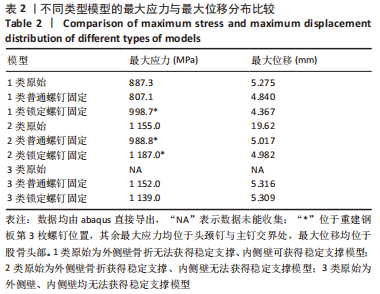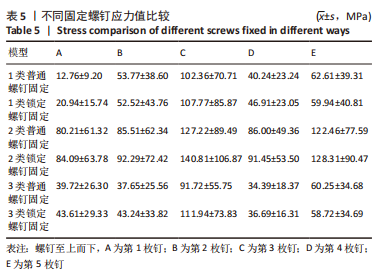[1] KREGOR PJ, OBREMSKEY WT, KREDER HJ, et al. Unstable pertrochanteric femoral fractures. J Orthop Trauma. 2005;19(1):63-66.
[2] ZHANG Q, CHEN W, LIU HJ, et al. The role of the calcar femorale in stress distribution in the proximal femur. Orthop Surg. 2009;1(4):311-316.
[3] GAO Z, LV Y, ZHOU F, et al. Risk factors for implant failure after fixation of proximal femoral fractures with fracture of the lateral femoral wall. Injury. 2018;49(2):315-322.
[4] HWANG JH, OH JK, HAN SH, et al. Mismatch between PFNA and medullary canal causing difficulty in nailing of the pertrochanteric fractures. Arch Orthop Trauma Surg. 2008;128(12):1443-1446.
[5] 武英楷,宁尚攀,孙国华,等.股骨近端外侧壁厚度及其临床意义[J]. 中国矫形外科杂志,2021,29(18):1680-1682.
[6] 赵晓涛,张殿英,郁凯,等. 股骨近端防旋髓内钉固定治疗股骨转子间骨折的失效原因分析[J]. 中华创伤骨科杂志,2021,23(3):202-208.
[7] 陈漳鑫,胡翠玉,郑振华,等. MIPPO重建外侧壁联合PFNA固定与单纯Intertan髓内钉固定治疗外侧壁不完整的股骨转子间骨折疗效比较[J]. 中国修复重建外科杂志,2020,34(9):1085-1090.
[8] 李尧,胡传真,茅凌洲,等. 股骨近端防旋髓内钉联合小钢板重建外侧壁治疗AO/OTA 31-A3型股骨转子间骨折[J].中国修复重建外科杂志,2019,33(10):1223-1227.
[9] 刘康,佟大可,刘培钊,等. 髓内钉辅助小钢板治疗累及外侧壁的股骨转子间骨折[J]. 上海医学,2017,40(6):337-340.
[10] 周建华,王跃.有限元分析在骨科中的应用及研究进展[J]. 实用医院临床杂志,2018,15(1):205-208.
[11] 顾海伦,杨军,王维,等.不稳定型股骨转子间外侧壁骨折的治疗策略[J]. 中华创伤骨科杂志,2016,18(8):679-684.
[12] 曾锦源,叶君健,谢昀,等. 股骨近端防旋髓内钉内固定治疗老年不稳定型股骨转子间骨折中螺旋刀片位置的研究[J]. 中国修复重建外科杂志,2020,34(5):569-573.
[13] LOTZ J C, GERHART TN, HAYES WC. Mechanical properties of metaphyseal bone in the proximal femur. J Biomech. 1991;24(5):317-329.
[14] LOTZ JC, GERHART TN, HAYES WC. Mechanical properties of trabecular bone from the proximal femur: a quantitative CT study. J Comput Assist Tomogr. 1990;14(1):107-114.
[15] GOTFRIED Y. The Lateral Trochanteric Wall: A Key Element in the Reconstruction of Unstable Pertrochanteric Hip Fractures. Clin Orthop Relat Res. 2004;(425):82-86.
[16] PALM H, JACOBSEN S, SONNE-HOLM S, et al. Integrity of the Lateral Femoral Wall in Intertrochanteric Hip Fractures: An Important Predictor of a Reoperation. J Bone Joint Surg Am. 2007;89(3):470-475.
[17] HAQ RU, MANHAS V, PANKAJ A, et al. Proximal femoral nails compared with reverse distal femoral locking plates in intertrochanteric fractures with a compromised lateral wall; a randomised controlled trial. Int Orthop. 2014;38(7):1443-1449.
[18] PRADEEP AR, KIRANKUMAR A, DHEENADHAYALAN J, et al. Intraoperative lateral wall fractures during Dynamic Hip Screw fixation for intertrochanteric fractures-Incidence, causative factors and clinical outcome. Injury. 2018;49(2):334-338.
[19] 张世民,祝晓忠,黄轶刚,等. 外侧壁危险型股骨粗隆间骨折DHS与PFNA治疗的回顾性对比研究[J]. 中国矫形外科杂志,2010, 18(22):1868-1872.
[20] GADEGONE WM, SHIVASHANKAR B, LOKHANDE V, et al. Augmentation of proximal femoral nail in unstable trochanteric fractures. SICOT J. 2017;3:12.
[21] ABRAM SG, POLLARD TC, ANDRADE AJ. Inadequate ‘three-point’ proximal fixation predicts failure of the Gamma nail. Bone Joint J. 2013; 95-B(6):825-830.
[22] CIUFO DJ, ZARUTA DA, LIPOF JS, et al. Risk Factors Associated With Cephalomedullary Nail Cutout in the Treatment of Trochanteric Hip Fractures. J Orthop Trauma. 2017;31(11):583-588.
[23] 张殿英,郁凯,杨剑,等. “杠杆-支点平衡”理论——对股骨转子间骨折治疗的新认识[J]. 中华创伤杂志,2020,36(7):647-651.
[24] 张殿英,张晓萌,郁凯,等. 重视骨折固定与骨内、外在因素的关系[J]. 中华肩肘外科电子杂志,2018,6(2):81-84.
[25] KULKARNI SG, BABHULKAR SS, KULKARNI SM, et al. Augmentation of intramedullary nailing in unstable intertrochanteric fractures using cerclage wire and lag screws: a comparative study. Injury. 2017;48: S18-S22.
[26] 陈志祥,王传功. 重建外侧壁及股骨矩治疗Evans-JensenⅤ型股骨转子间骨折的疗效分析[J]. 中国骨伤,2020,33(11):1053-1057. |













